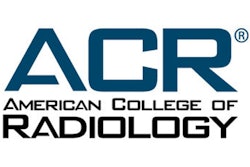Dear Imaging Leaders Insider,
Radiology reports that arrive from external institutions and are scanned into the electronic health record (EHR) can contain significant abnormalities. However, they may not always be categorized correctly in the EHR and can be difficult to track. They're also laborious to manually review.
To address this flawed process, researchers from the University of Texas have developed an automated method that can identify findings in reports that need to be followed up. You can learn all about their initiative by reading this edition's Insider Exclusive.
The U.S. No Surprises Act has generated significant controversy over the last few months. Although the law was intended to protect patients from surprise billing for out-of-network care provided without their consent, the American College of Radiology (ACR) and other organizations have warned that an interim final rule from the U.S. Department of Health and Human Services (HHS) is being used by insurers to narrow provider networks. The ACR and two other associations have sued the HHS over the rule and are seeking a summary judgment in federal court.
The No Surprises Act also includes important patient transparency requirements that all radiology practices must follow, according to a new column from Sandy Coffta of Healthcare Administrative Partners (HAP).
In other news, the U.S. Centers for Medicare and Medicaid Services has lowered the starting age and smoking history requirements in its new final coverage decision for low-dose CT lung cancer screening. The decision is particularly timely given the dramatic reduction in cancer screening exams -- including of the lung -- that occurred during the COVID-19 pandemic.
Patient stress and anxiety can lead to repeated MRI scans and longer exam times, according to a recent study. And radiology needs to be more efficient to adapt to the shift to value-based care, according to a presentation at Arab Health 2022.
As artificial intelligence continues to advance in radiology, some believe the technology will eventually begin to exceed human performance. Although that won't happen anytime soon, the time is now to prepare for the resulting medicolegal liability issues, according to a recent article. Speaking of liability concerns, a new report found that radiologists are among the medical professionals most likely to be sued.
Although there are hundreds of new, revised, and deleted Current Procedural Terminology codes in 2022, only a few affect radiology. Erin Stephens of HAP reviewed the key changes in her column. In addition, Sandy Coffta of HAP discussed the impact of the latest Medicare payment changes on radiology practices.
Is there a story you'd like to see covered in the Imaging Leaders Community? Please feel free to drop me a line.




















